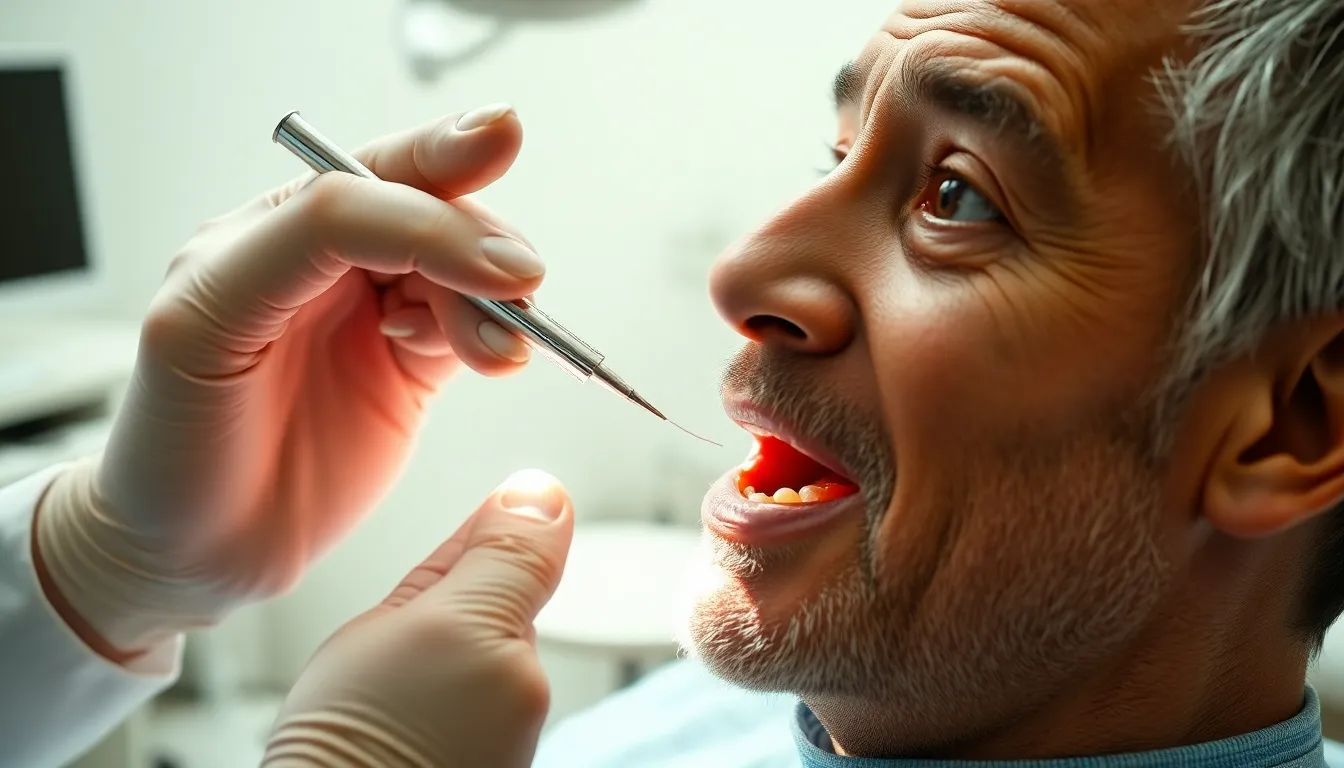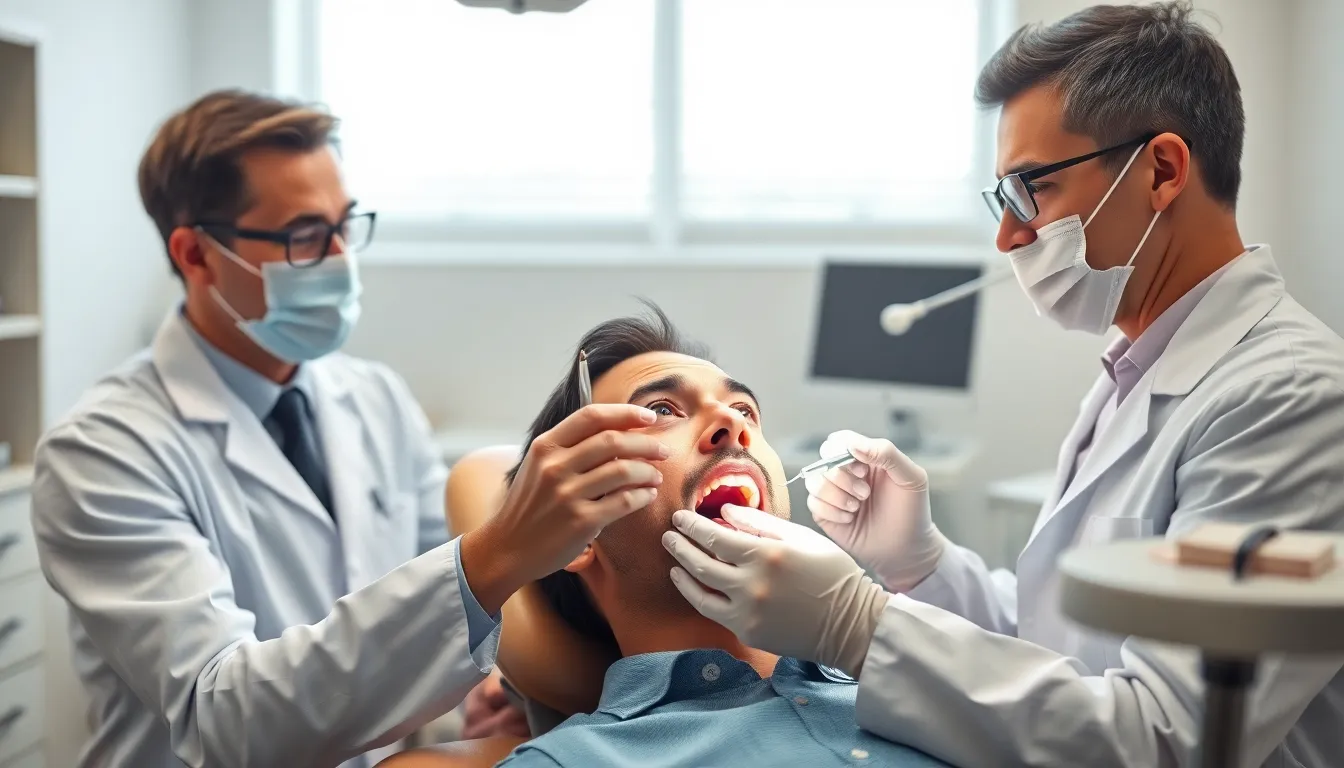Are you struggling with putting on braces elastics? Don’t worry – you’re not alone. Many orthodontic patients find this small but crucial task challenging at first.
Wearing elastics correctly is essential for your braces to work effectively. These tiny rubber bands help align your jaw and teeth properly, significantly reducing your overall treatment time. When applied correctly, elastics create the precise tension your orthodontist has planned for your unique smile journey. In this guide, we’ll walk you through the simple step-by-step process of putting on your elastics properly, common mistakes to avoid, and tips to make the routine easier.
Understanding Braces Elastics: What They Are and Why You Need Them
Braces elastics (also called rubber bands) are small, stretchy loops that connect different parts of your braces. These tiny but mighty components create the tension needed to align your jaw and teeth properly. Orthodontists prescribe elastics at exact stages of treatment to address particular alignment issues that brackets and wires alone can’t fix.
Most elastics fall into three main categories:
- Class I elastics: Connect teeth on the same arch (top to top or bottom to bottom)
- Class II elastics: Pull the lower jaw forward to correct overbites
- Class III elastics: Pull the upper jaw forward to correct underbites
Dr. Todd B. Harris explains, “I’ve seen treatment times reduced by up to 6 months when patients consistently wear their elastics as directed. They’re the unsung heroes of orthodontic treatment.”
Elastics work by applying continuous gentle pressure in exact directions to gradually shift teeth and jaw positioning. The constant tension they create helps to close gaps, align your bite, and ensure your upper and lower teeth fit together correctly. Your orthodontist carefully calculates the exact strength and placement needed for your unique situation.
One patient, Michelle, initially struggled with her elastics routine: “I didn’t understand why I needed these tiny rubber bands until my orthodontist showed me my progress photos. The difference in my bite after just 3 months of consistent wear was incredible.”
Your elastics come in various strengths (light, medium, heavy) and sizes (1/8 inch to 1/2 inch), each serving different purposes in your treatment plan. Wearing them consistently is crucial—most orthodontists recommend 20-22 hours daily, removing them only for eating and brushing.
Essential Tools for Putting on Braces Elastics

You’ll need exact tools to properly apply elastics on your braces. Orthodontic elastics (rubber bands) are specially designed for braces and aren’t the same as office rubber bands. These come in various sizes and strengths depending on your treatment needs, with latex-free options available for those with allergies.
A rubber band hook makes placement significantly easier, especially for hard-to-reach areas. This small plastic tool resembles a hook and helps guide the elastics onto the brackets without struggling. Many patients find this tool invaluable, particularly those with limited dexterity or smaller mouths.
Clean hands or tweezers serve as alternatives if you don’t have a rubber band hook. Ensuring your fingers are thoroughly washed before handling elastics prevents transferring bacteria into your mouth and onto your orthodontic appliance.
Step-by-Step Guide to Putting on Braces Elastics

Applying orthodontic elastics correctly requires practice and precision to ensure they work effectively. The following steps break down the process into manageable parts to help you master this essential skill for your orthodontic treatment.
Preparing Your Hands and Mouth
Proper preparation creates the foundation for successful elastic placement. Wash your hands thoroughly with soap and water before handling any elastics to prevent transferring bacteria to your mouth. Position yourself in front of a well-lit mirror where you can clearly see all parts of your braces and hooks. If your fingers are too large or your nails are long, consider using a rubber band hook tool to make the process easier and more hygienic.
Proper Elastic Placement Techniques
Elastic placement requires attention to detail and a steady hand. First, identify the exact hooks on your braces where the elastics need to be attached—these typically appear as small metal loops on brackets of your canines, premolars, or molars. Take one elastic and gently stretch it between your fingers to prepare it for placement. Hook one end securely onto the first designated bracket, then carefully stretch it to reach the corresponding hook as prescribed by your orthodontist. The elastic should sit firmly on both hooks without slipping off, but avoid stretching it too much as this can cause it to snap during placement. Many patients find that starting with the back hook first makes the process easier.
Common Elastic Patterns and Configurations
Orthodontic elastics follow exact patterns based on your unique treatment needs. Triangle patterns connect three different hooks, forming a triangular shape that’s particularly effective for adjusting bite alignment issues. Box patterns link four hooks in a rectangular configuration, providing stability and controlled movement across multiple teeth. Straight-line patterns, the most common arrangement, connect two hooks on opposite teeth to encourage direct movement in a exact direction. Your orthodontist will specify exactly which pattern works for your case and may change these configurations throughout your treatment as your teeth progress. Patients who follow their prescribed elastic patterns typically see faster progress in their treatment timeline.
Common Mistakes to Avoid When Wearing Braces Elastics
Tips for Making Elastic Placement Easier

Putting on braces elastics becomes simpler with practice and the right techniques. These practical tips will help you master the process and ensure your orthodontic treatment progresses smoothly.
Using Special Tools and Accessories
Specialized orthodontic tools significantly reduce the frustration of placing elastics. Elastic placers feature a thin hook designed specifically for stretching and positioning elastics onto bracket hooks without straining your fingers. Many orthodontists provide these tools as part of your treatment kit. Orthodontic tweezers offer excellent precision for patients with limited dexterity or those struggling with back molars. Some patients find that household items like floss threaders or the end of a toothbrush can work in a pinch when specialized tools aren’t available.
Dr. Todd B. Harris notes, “About 70% of my patients who initially struggle with elastics find that using a proper placement tool makes a dramatic difference in their confidence and consistency with elastic wear.”
Practicing in Front of a Mirror
A well-lit mirror transforms the elastic placement process from challenging to manageable. Position yourself directly in front of a bathroom mirror with overhead lighting to eliminate shadows that might obscure bracket hooks. Tilting your head slightly helps access difficult angles, particularly for elastics that connect upper and lower teeth. Daily practice develops muscle memory that makes the process second-nature within a week.
Managing Discomfort When Wearing Elastics

Initial discomfort from braces elastics is completely normal during your orthodontic treatment. Your mouth will feel sore or experience pressure when you first start wearing elastics, as they create tension to move your teeth into proper alignment. Many patients report that this sensation diminishes within 3-5 days as oral tissues adapt to the new forces.
Understanding Temporary Pain
Elastic bands create continuous pressure that’s necessary for tooth movement. This pressure often translates into a dull ache or soreness, particularly when chewing or speaking. Dr. Todd B. Harris explains, “The discomfort patients experience is actually a sign that treatment is progressing—it means those elastics are actively working to realign your bite.”
Effective Pain Management Strategies
Over-the-counter pain relievers taken before discomfort peaks can significantly reduce elastic-related soreness. Applying orthodontic wax over brackets or hooks prevents irritation against your cheeks and lips when elastics pull in certain directions. Cold foods or ice packs temporarily numb sensitive areas, providing quick relief during adjustment periods.
Sarah, a 16-year-old patient, shared her experience: “My first week with elastics was tough, but I started using a warm salt water rinse twice daily which really helped soothe my gums. By week two, I barely noticed them.”
Adaptation Timeline
Your mouth gradually adjusts to elastics within 7-10 days of consistent wear. Replacing elastics daily maintains optimal tension while preventing overstretched bands from causing unnecessary discomfort. Morning replacement often works best since fresh elastics provide proper tension throughout your most active hours.
Consistent wear accelerates the adaptation process—removing elastics frequently due to discomfort actually prolongs the adjustment period. Patients who stick to the recommended 20-22 hours of daily wear report faster adaptation and shorter overall treatment times compared to those who frequently remove their elastics.
Common Mistakes to Avoid When Putting on Elastics
Proper elastic wear significantly impacts your orthodontic treatment success, yet many patients make avoidable errors. Skipping hand washing before handling elastics introduces harmful bacteria into your mouth, potentially causing infections. Dr. Todd B. Harris emphasizes, “Clean hands are your first defense against oral complications during orthodontic treatment.”
Incorrect placement on hooks compromises treatment effectiveness and may worsen alignment issues. Many patients report confusion about proper positioning, especially during the first few weeks. Michelle, a 16-year-old patient, shared, “I accidentally placed my elastics diagonally instead of vertically for three days and noticed my teeth shifting in the wrong direction.”
Using non-orthodontic rubber bands poses serious risks to your treatment. Office supply bands lack the specialized design and controlled force of orthodontic elastics, often breaking easily or applying improper pressure. These inappropriate substitutes can damage brackets and prolong your treatment time.
Inconsistent wear represents the most common mistake among braces patients. Removing elastics too frequently or wearing them only part-time dramatically slows tooth movement and extends overall treatment duration. Research shows patients who wear elastics as prescribed (20-22 hours daily) complete treatment up to 6 months faster than those with sporadic compliance.
Overstretching elastics while placing them reduces their effectiveness and increases breakage risk. Gentle application preserves the elastic’s integrity and ensures consistent force application. Patients frequently report snapping elastics when pulling them too forcefully across multiple brackets.
Reusing elastics instead of replacing them daily compromises their elasticity and therapeutic force. Old elastics lose tension and fail to move teeth effectively, essentially wasting valuable treatment time. Fresh elastics maintain consistent pressure needed for proper tooth movement.
How to Maintain Your Elastics Throughout the Day
Proper maintenance of your braces elastics throughout the day plays a crucial role in the success of your orthodontic treatment. Consistency and correct handling ensure these small but mighty components work effectively to align your teeth and jaw.
Wear Time Requirements
Elastics require 20-22 hours of daily wear for optimal results. This includes wearing them while you sleep, removing them only during meals, tooth brushing, or when using a mouthguard for sports. Some treatment plans may call for nighttime-only wear (12-14 hours), but always follow your orthodontist’s exact instructions. Dr. Todd B. Harris emphasizes, “The difference between wearing elastics for 20 hours versus 15 hours daily can extend treatment by several months.”
Consistency Is Key
Your elastics must be worn consistently every single day. Sporadic use creates a counterproductive cycle where teeth move slightly and then resist further movement. This stop-start pattern can significantly delay your treatment progress. Michelle, a 16-year-old patient, shares, “Once I committed to wearing my elastics consistently, I noticed visible improvement in just three weeks, compared to the minimal changes I saw during months of on-again, off-again wear.”
Carrying Replacement Elastics
Always keep extra elastics with you in a small container. Elastics can break unexpectedly or lose their tension throughout the day, making immediate replacement necessary. Stash spare packets in your backpack, purse, locker, and car to ensure you’re never caught without replacements.
Maintaining Oral Hygiene
Clean your teeth and braces thoroughly after eating before replacing elastics. Food particles trapped around hooks can cause discomfort and lead to decay. Regular brushing around elastic hooks prevents inflammation and keeps your treatment on track.
Managing Initial Discomfort
Elastics typically cause some soreness during the first 2-3 days of wear. This discomfort indicates the elastics are working to move your teeth into proper alignment. Your mouth will adapt to the sensation with consistent wear, gradually reducing any initial pain.
Conclusion
Mastering how to put on your braces elastics correctly is a game-changer for your orthodontic journey. With consistent practice and following the techniques outlined in this guide you’ll soon become an expert at placing these tiny but mighty tools.
Remember that your dedication to wearing elastics 20-22 hours daily directly impacts your treatment timeline. The initial discomfort will fade as your mouth adapts and you’ll be rewarded with properly aligned teeth and jaw.
Keep extra elastics handy maintain good oral hygiene and follow your orthodontist’s exact instructions. Your efforts today mean a healthier more beautiful smile tomorrow. Stay committed to your elastic wear routine and you’ll be showing off your perfect smile before you know it.
Frequently Asked Questions
What are braces elastics and why are they important?
Braces elastics are small, stretchy rubber bands that connect different parts of your braces. They create the necessary tension to align your jaw and teeth properly. These elastics are crucial because they accelerate the treatment process—orthodontists note that consistent wear can reduce treatment time by up to six months. Without elastics, braces alone may not be able to correct certain alignment issues, particularly those involving jaw positioning.
How many hours per day should I wear my elastics?
You should wear your elastics for 20-22 hours daily. Only remove them when eating and brushing your teeth. Consistent wear is critical for effective treatment—even missing a few hours can slow down your progress. Patients who adhere strictly to the recommended wear time typically see faster results and shorter overall treatment durations.
What are the different types of braces elastics?
There are three main categories of braces elastics: Class I (used for spacing issues within the same jaw), Class II (corrects overbites by pulling the lower jaw forward), and Class III (addresses underbites by pulling the upper jaw forward). Each type comes in various strengths and sizes tailored to your specific treatment needs. Your orthodontist will prescribe the appropriate class based on your alignment requirements.
How do I put on braces elastics correctly?
To put on elastics correctly: 1) Wash your hands thoroughly, 2) Hold the elastic with your fingers or an orthodontic hook tool, 3) Stretch it gently from one attachment point to another following your orthodontist’s prescribed pattern, 4) Verify the elastic is securely placed on both attachment points. Correct placement ensures proper tension and alignment for effective treatment.
Is it normal for elastics to cause pain?
Yes, initial discomfort when wearing elastics is completely normal. This soreness indicates the elastics are working to move your teeth and jaw. Most patients adapt within 3-5 days as their mouth gets used to the tension. If pain persists or becomes severe, consult your orthodontist. For mild discomfort, over-the-counter pain relievers, orthodontic wax, and cold foods can provide relief.
What common mistakes should I avoid with elastics?
Avoid these common mistakes: skipping hand washing before handling elastics, incorrect placement that doesn’t follow your prescribed pattern, using non-orthodontic rubber bands (which can damage teeth), inconsistent wear, overstretching elastics when applying them, and reusing old elastics. These errors can compromise treatment effectiveness and potentially extend your time in braces.
What should I do if my elastic breaks?
If an elastic breaks, replace it immediately with a new one. Always carry spare elastics with you at school, work, or when traveling. A single missing elastic might not seem significant, but even a few hours without proper tension can affect your treatment progress. Your orthodontist typically provides extra elastics, but contact their office if you need more.
Can I eat with elastics on?
No, you should remove your elastics while eating. Food particles can get trapped in the elastics, and chewing may cause them to break prematurely. After eating, brush your teeth before putting on fresh elastics. This maintains good oral hygiene and ensures your elastics remain effective. Never reuse elastics after removing them—always replace with new ones.







